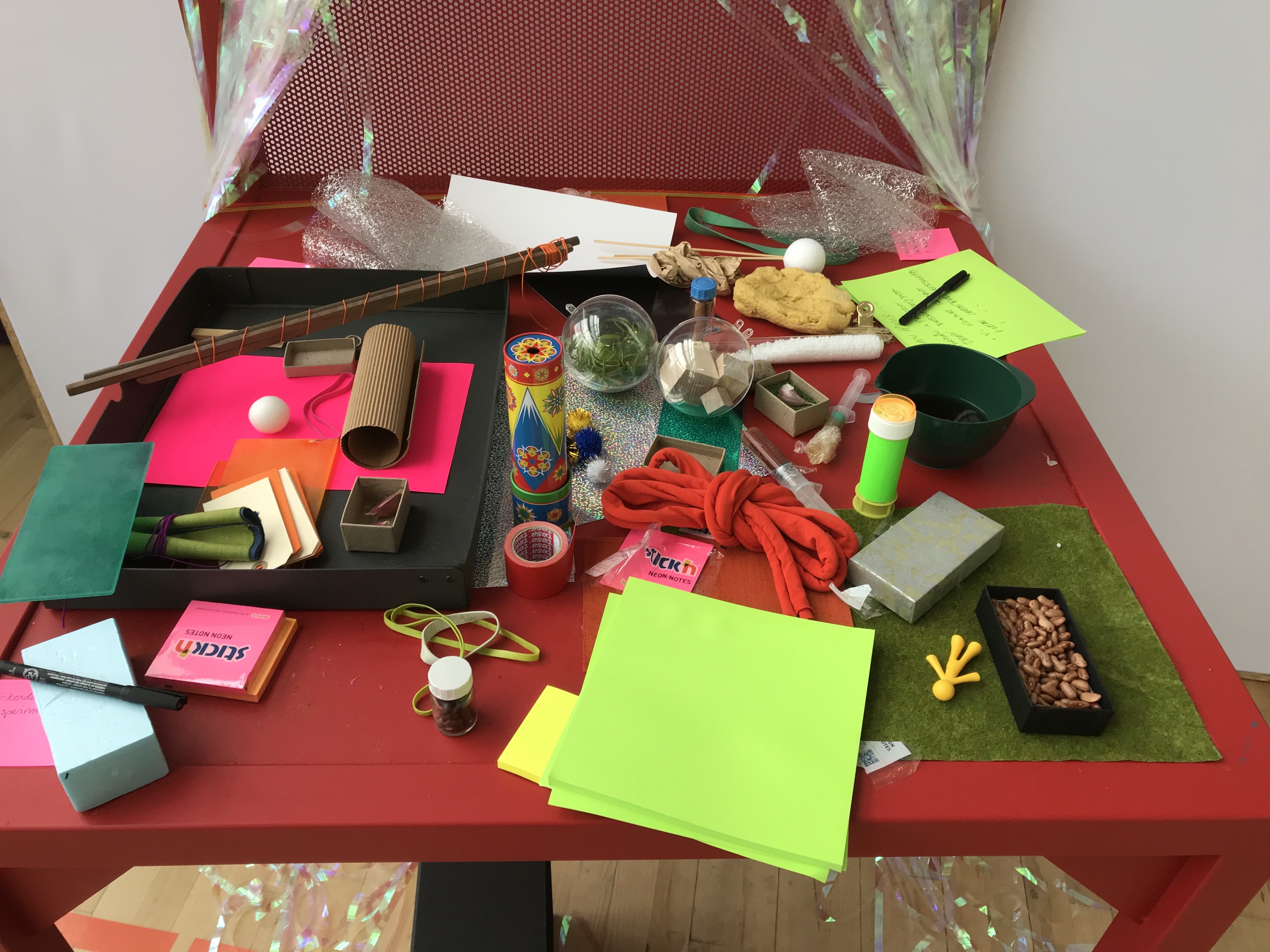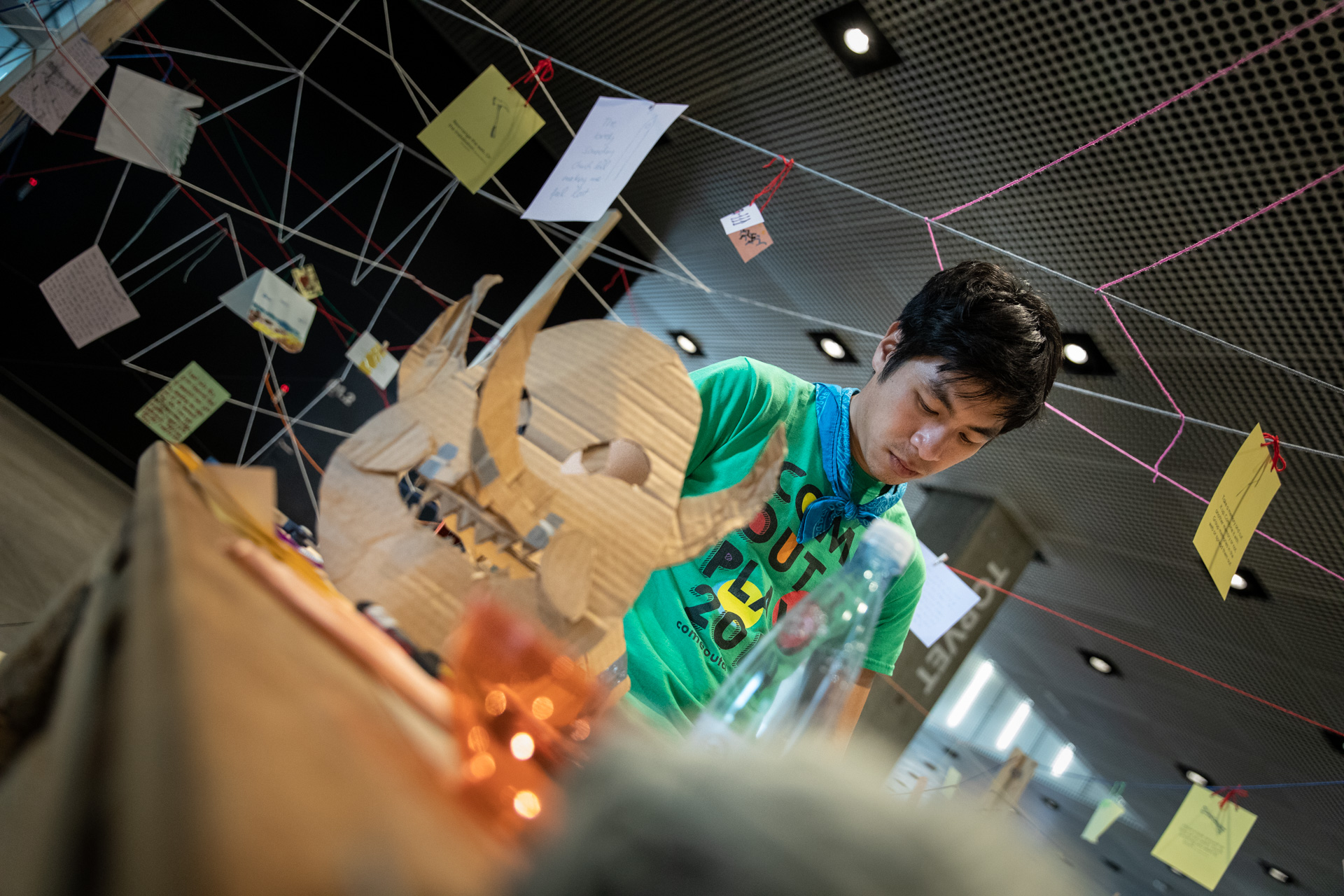Let’s talk a bit about objects, materials, artifacts.
I decided to narrow my exploration of play as democratic participation down to the arena of “skrammellegepladser”, AKA junk or adventure playgrounds, for a number of reasons. I am particularly motivated by the social, embodied forms of play, where players interact with each other, materials and objects, often in interesting and surprising ways.
These situations are particularly fascinating to me, and I have observed this take place so many times over the years and in several different contexts. Basically, gather objects and materials, create a framing narrative and invite people to play with it. Sometimes, there are more specific guidelines or directions, often it remains rather open-ended.

In playwork, there’s the notion of “loose parts”, including a “theory of loose parts” and a lovely “Loose parts manual“. Loose parts are, in short, any material that is not already too fixed and filled with meaning.
My friend Helle describes how “play media” are part of “play practices”, which in turn allow for certain kinds of “play moods”, in which “I am especially open-minded towards creating meaning; I am filled with hope for something meaningful to happen; and I bear a great trust in the people I am around” (from Framing Play Design).
It is in this “mood” of play that I have observed a particularly outspoken presence, sincerity and openness as well as agency and imagination: when people really play, they are typically less inhibited and more prone to explore radically different ideas, worlds and ways of living.
Miguel Sicart has an interesting take on this in Play Matters:
Play matters when it is appropriative, taking over a situation and turning it into a context of play. Toys facilitate appropriation: they create an opening in the constitution of a particular situation that justifies the activity of play. Through toys, we realize that play is possible, and we start playing. The toy is a gate to the world understood through play.
Toys (in the broad sense), “play media” and “loose parts” are all objects that can inspire and help maintain play.
Now, while this topic already figure prominently in play research I believe that the field of design – both research and practice – still has much to teach us about the role of materials and objects in play. For me, coming into the world of design, these issues have been a bridgehead: our interaction with the physical world, matters of touch and tactility.
I’ve been happy to learn that “material-oriented dialogues” are quite popular (allowing materials to inspire and inform our conversations, thinking and talking with our hands), and that a “new type of design process is emerging, in which the material is present from the outset and can be seen as the driver of the process.” (Bak-Andersen).
I’m currently reading (albeit slowly) “Design and Political Dissent: Spaces, Visuals, Materialities“, where it is argued that “disobedient objects” “material practices and artifacts have the capacity to articulate political arguments and act politically”. This is very interesting to me to uncover: the role and voice of objects.
In “Design and Agency: Critical Perspectives on Identities, Histories, and Practices“, Ece Canli asks “What Do Things Do? Can Inanimate Things Act, Enact or React? Do Things Have Agency?” and continue:
“Things talk back, act back or “kick back” (Barad 2007) on us, insomuch as they become “actants” in their own rights, possessing the socio-culturally negotiated capacity to exert power (Gell 1998; Wassrin 2018). This also affirmed that agency is not limited to human volition, but manifested through other material configurations”
This mirrors what Hoskins wrote in “Agency, biography and objects” from an anthroplogical perspective:
Even those objects which seem to be without a directly identifiable function – that is, objects which have previously been theorized as simple objects of aesthetic contemplation – are in fact made in order to act upon the world and to act upon other persons. Material objects thus embody complex intentionalities and mediate
social agency.
Drawing on speculative design and design fiction, I intend to explore what happens if the agency of objects is exaggerated, at least a little beyond (what some would consider) the limits of reason. I believe this can invite the aforementioned play mood, and potentially tell us something new about the role of materials in democratic participation and deliberation.
I recently started describing an experiment I would like to conduct, and I made a set of rules – “The Law of the playground”. One of those “laws” were that “the materials have their own voice, agency and desires”.
Finally, in choosing to connect to the origins of adventure playgrounds, the “skrammellegeplads” in Danish (junk playground), the materials are not just any kind of material, they are discarded materials. Materials and objects that would otherwise probably have been considered worthless, but may now in fact guide us to new insights, fabulations and speculations not despite but because of their supposed worthlessness.
These are just a few of my current fabulations on play, design and democratic participation as these relate to physical objects and materials. More to come.

Leave a Reply